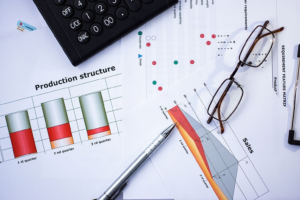Numerous factors can influence how many products you sell in a given time period. While it is hard to foresee all of the factors that may influence sales performance, firms that use demand forecasting have been able to make informed and accurate decisions regarding the future as well as their current inventory needs.
But what exactly is demand forecasting? And how should you project demand for your business? We will address these and other concerns in the sections that follow. But first, consider the definition of demand forecasting.
What exactly is demand forecasting?
Demand forecasting, as the name implies, is the practice of predicting your product’s future demand. The demand forecasting methodology makes educated estimates about what sales would look like in the immediate and long term based on historical sales performance, seasonal trends, and other pertinent data.
The capacity to plan warehousing, inventory and budgeting decisions is enormously beneficial. It enables businesses to keep stock products on hand while avoiding the overhead costs associated with having too much product inventory that cannot be moved fast.
While flawless forecasting may seem impossible, today’s demand forecasting tools and best practices have enabled businesses to create more precise projections than ever before.
The major advantage of employing the technique is that with each year of employing demand forecasting methodologies, businesses may amass more data to work with, compensating for previous disparities and continuously increasing performance.
Forecasting Demand Is Important, Why?
 All businesses are driven by demand. As a result, it is not surprising that the ability to develop an accurate demand estimate can significantly impact your organization.
All businesses are driven by demand. As a result, it is not surprising that the ability to develop an accurate demand estimate can significantly impact your organization.
But what is the significance of demand forecasting? Let’s look at some demand forecasting examples. These will highlight the influence of this technique on your business decisions.
Pricing of Products or Services
Pricing is an essential component of running a business. You must determine the appropriate markup for your circumstance, taking into account current market activity and demand for your product.
With demand forecasting, you can properly predict when your products will be the most popular, make pricing adjustments, and capitalize on chances when demand is strong and supply in the market is low.
Simultaneously, if you anticipate a drop in demand, you can cut your prices and sell some of your inventory. This can increase your cash flow and lower your overhead costs for that time period.
Budget and Planning
Another reason demand forecasting is so important is the role it plays in budget planning. Consistent cash flow and smart resource allocation are always top priorities for businesses.
 Sound demand forecasting procedures might be the difference between capitalizing on growth possibilities and running into major problems. This is especially true when demand is low and you need to have resources set aside to sustain the business during the income drop.
Sound demand forecasting procedures might be the difference between capitalizing on growth possibilities and running into major problems. This is especially true when demand is low and you need to have resources set aside to sustain the business during the income drop.
Inventory Optimization
A demand forecasting example shows how it might be used to optimize inventory. One of the best strategies to maximize how you use existing resources is to have a strong understanding of your inventory needs.
On the one hand, you want to keep inventory expenses low and only stock up when necessary. At the same time, you must be able to accommodate surges in demand. Running out of stock in the midst of a buying frenzy can drastically harm not only your sales income but also your business reputation.
Types of Demand Forecasting
To get the most of what demand forecasting has to offer, it is critical to grasp the many types and applications that can be utilized in various situations.
Active & Passive
Passive demand forecasting is appropriate for firms that do not anticipate rapid expansion and rely on limited historical data. Meanwhile, active demand forecasting takes into account additional aspects such as external influences and even the economy.
Micro and macroeconomics
 At the macro level, demand forecasting examines the entire market and evaluates the shifts and patterns that are taking place. Micro-level demand forecasting evaluates the business’s processes and uses that data to estimate future patterns.
At the macro level, demand forecasting examines the entire market and evaluates the shifts and patterns that are taking place. Micro-level demand forecasting evaluates the business’s processes and uses that data to estimate future patterns.
Long Term & Short Term
Finally, demand forecasting can be used to examine different time periods. Short-term forecasting considers the approaching months, and long-term forecasting considers multiple years.
Methods of Demand Forecasting
There are two basic techniques to demand to forecast that can assist you in determining how to estimate demand more accurately. Depending on your business circumstances, size, and historical data sample size, you may discover that some procedures are better suited to your needs than others.
The first type of method is quantitative, which is based on historical or current data. This entails analyzing data from the previous several years, or even existing data, and interpreting it to offer you predictions about expected future performance.
Quantitative demand forecasting employs complex models such as the autoregressive integrated moving average, with the equation fine-tuned to account for historical representation. Then, enter the relevant numbers to generate a forecast.
Another strategy is qualitative demand forecasting, which relies on expert opinions from both inside and outside the organization to generate several projections and then synthesis them to give a final outcome.
Qualitative demand forecasting can also include surveys of the target audience, revealing insights that people within the business organization may have overlooked. However, one of the most major demand forecasting limits with this methodology is the difficulty in ensuring the survey is an accurate reflection of your audience.
In conclusion
One of the most effective strategies for anticipating future sales is demand forecasting. With Esopos business management tool, this is easily done and it’s also a good approach to optimize your business so that it can handle changes in demand in the most cost-effective way feasible.




